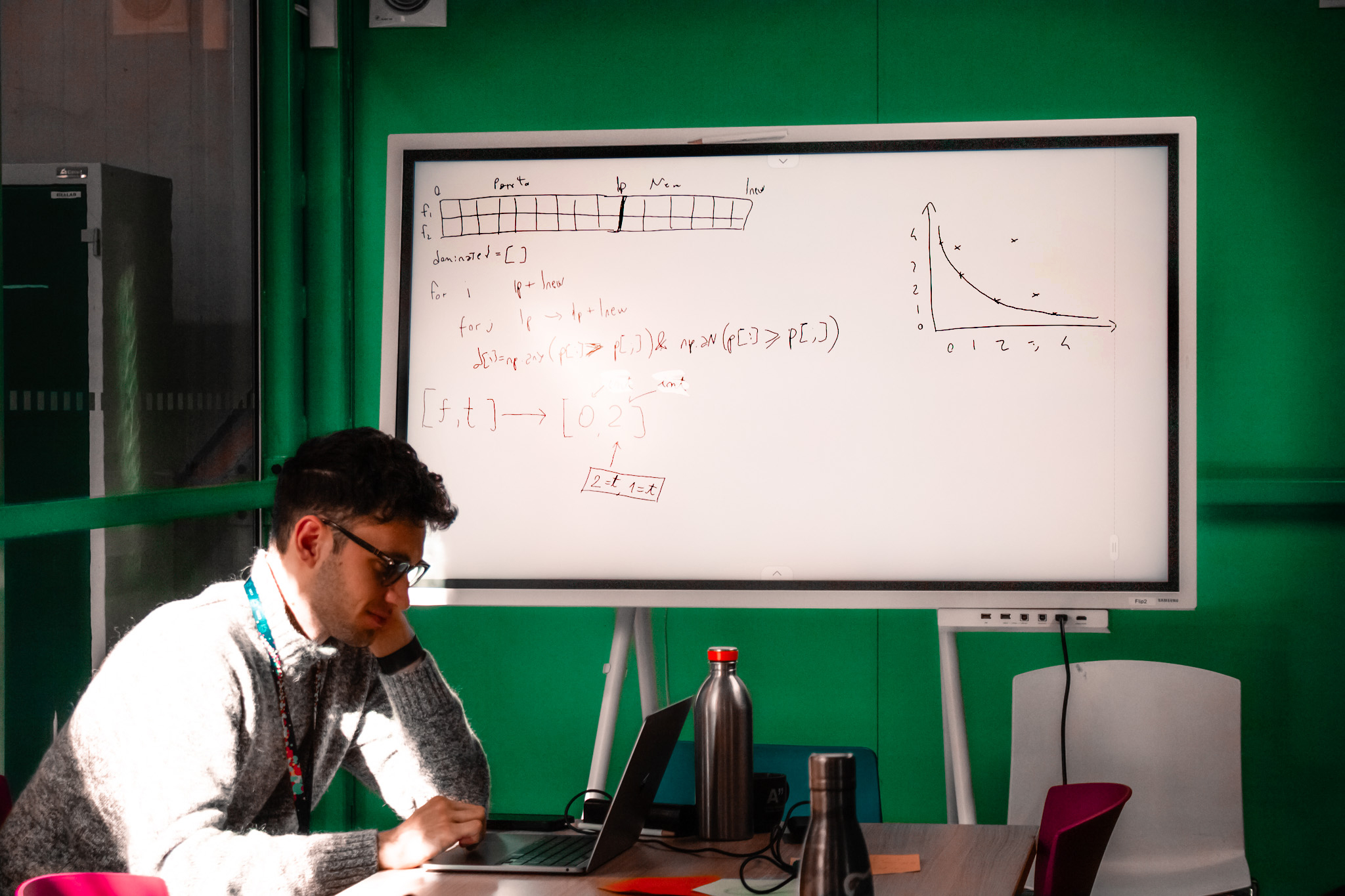A hackathon to reconstruct the trajectories of particles in the CMS experiment
The 15th Patatrack Hackathon took place at IdeaSquare to focus on reconstruction algorithms for the CMS experiment.

A new hackathon for CMS took place at IdeaSquare, to brainstorm, debug, develop and improve algorithms or well-defined pieces of code, sharing ideas and knowledge, away from emails, meetings, and other distractions.
Ten groups were formed to work on specific aspects linked to the algorithms allowing the reconstruction of the particle jets produced by each collision inside the CMS detector. The particles produced by the collisions interact with different components of the detector, and the goal of these algorithms is to understand the trajectory of each particle. These algorithms are then optimised to increase their precision and evolve with the possibilities offered by new hardware.
 Different tasks are distributed among the self-organised groups. Among these tasks are the reconstruction of the trajectories of electrons or muons, the optimisation of a generic algorithm for tracking each particle produced and the development of a general algorithm whose role is to optimise the other algorithms. Several technologies are being explored, such as Graph neural networks for vertex reconstruction. Another important task is also to look at how the hardware supporting these algorithms is used, and to avoid going back and forth between the CPU (Central Processing Unit) and the GPU (Graphics Processing Unit). Groups are thus looking at how to optimise GPU processing or use new generations of CPUs instead.
Different tasks are distributed among the self-organised groups. Among these tasks are the reconstruction of the trajectories of electrons or muons, the optimisation of a generic algorithm for tracking each particle produced and the development of a general algorithm whose role is to optimise the other algorithms. Several technologies are being explored, such as Graph neural networks for vertex reconstruction. Another important task is also to look at how the hardware supporting these algorithms is used, and to avoid going back and forth between the CPU (Central Processing Unit) and the GPU (Graphics Processing Unit). Groups are thus looking at how to optimise GPU processing or use new generations of CPUs instead.
The groups focus on different parts of the detector, for example, its core, the Crystal Electromagnetic Calorimeter, or its endcap, the Hadron Calorimeter, which will be replaced by a new one with the High Luminosity (HiLumi) upgrade. New algorithms must therefore be developed in anticipation of this upgrade.
At the end of the week, they gather to share all the work done, allowing everyone to have an overview and ensure that information circulates between them and that they can find synergies – exactly in the same fashion as the general algorithm that was developed to optimise the workflow.






